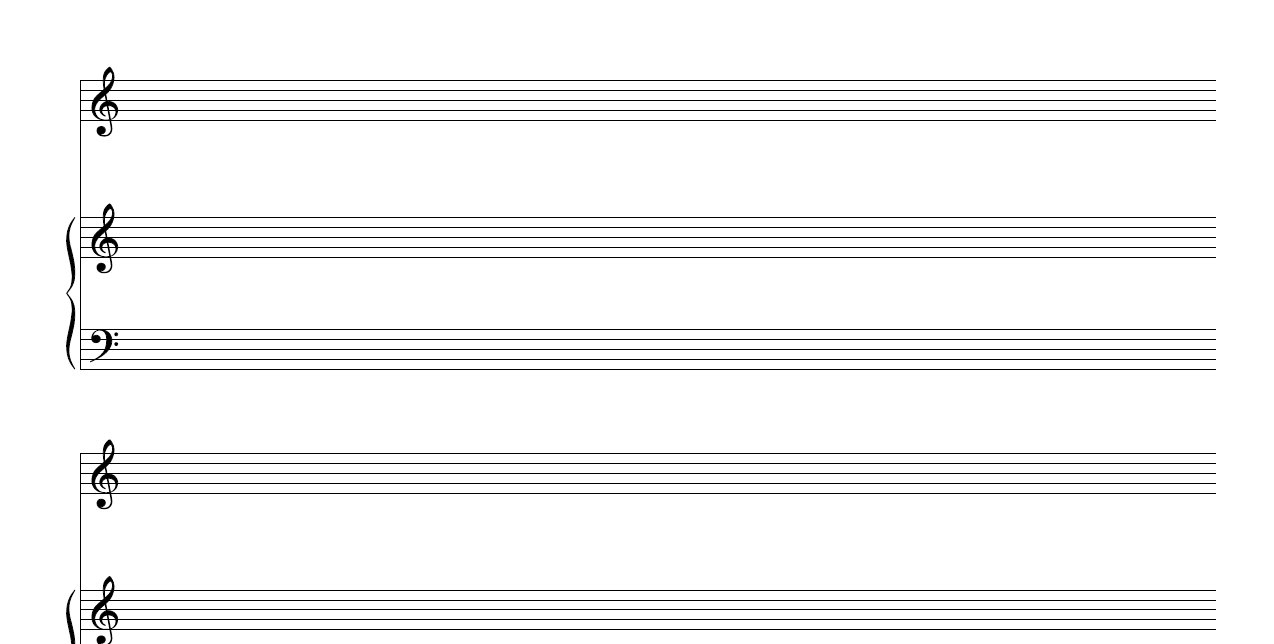
#Sheet music manuscript paper printable pdf
Find them here:įor many of these you will need the ADOBE PDF Reader program to view and print them.

#Sheet music manuscript paper printable full
Newly to the list of printable staff paper is a great site, from the folks at, that has compiled a list of blank music papers and ensemble staffs in PDF format including: solos, duets, trio, quartets, quintets, full concert band, marching band, jazz band, orchestra, SSA, SAB, SATB, ans SSATB! A great new resouce… I hope it is maintained for a long time! You can find it here:ĭolmetsch Online (Which I have written about extensively on our site!) also has a very large set of blank music manuscript papers including: 14-40 staves, keyboard with soloists, percussion/drum, and just about any that you could want or imagine! Find them here:įinally, Music Sheaf has a great interface for selecting blank music staff paper as well, including both US, ISO, and even customizable paper sizes for print. In addition, you are able to choose the scale, orientation, brackets, and contrast of the print. They offer the ability to print blank treble, bass, C, percussion, piano, guitar, bass, mandolin, and other TAB based staves.

One of the very best sites to print staff paper (and highly customizable) is : The complexity of the music is not intimidating for them, and it is so easy for me to insert into lessons.It must be time to talk about this again as I am getting a number of students asking me where they can obtain staff paper! There are a number of GREAT sites online where customizable music staff paper templates can either be designed or are already templatized. I see a difference in my students' comfort level approaching new piano pieces. now they have a reason to pay attention to where a sharp actually goes. Then, the following week, it was D, D, A, A, B, B, A. We have been writing out "Twinkle twinkle little star, how I wonder what you are." No timing - just plain whole notes.įirst we all started with C, C, G, G, A, A, G. I like to give them a familiar tune, and make them write out just the first phrase. We'll keep drawing those treble clefs until they can make them better than me! What good is this for older players? Mostly they will get it, and then we expand outward from there. Where do you think it will be?" and I ask them to draw the F. What is the note below G, touching G?" (It is F, of course.) Then I say, "So F has to touch the G line. This is for the beginners who are having trouble seeing higher and lower notes, line or space notes. None of the cursive letters REALLY look like the treble clef, of course but after a bit of guessing, I'll mention how in the OLDEN DAYS, cursive writing was very fancy, and that treble clef really did look like the letter G. I'll draw line note G on the second line and ask them, "What is the note on that line?" and then we go through the musical alphabet, with me drawing a cursive alphabet, if they don't remember what that landmark note is. swoop up and over to the middle line, then down and swirl around the second line!" That second line is "G", of course now make a big backwards capital 'D', landing on the bottom line. up to the top and over a little bit - make a small capital 'D'. it is a challenge just to make the loops and swirls in the right directions, and then to land them on the target lines takes real attention!įor an all-in-one line, I direct them (as I am also drawing), "Umbrella handle - start at the bottom.

They all LOVE to practice drawing notes and musical symbols! I start with drawing the treble clef Lately, every lesson, all of my students spend about 3 minutes with one of these staffs.


 0 kommentar(er)
0 kommentar(er)
